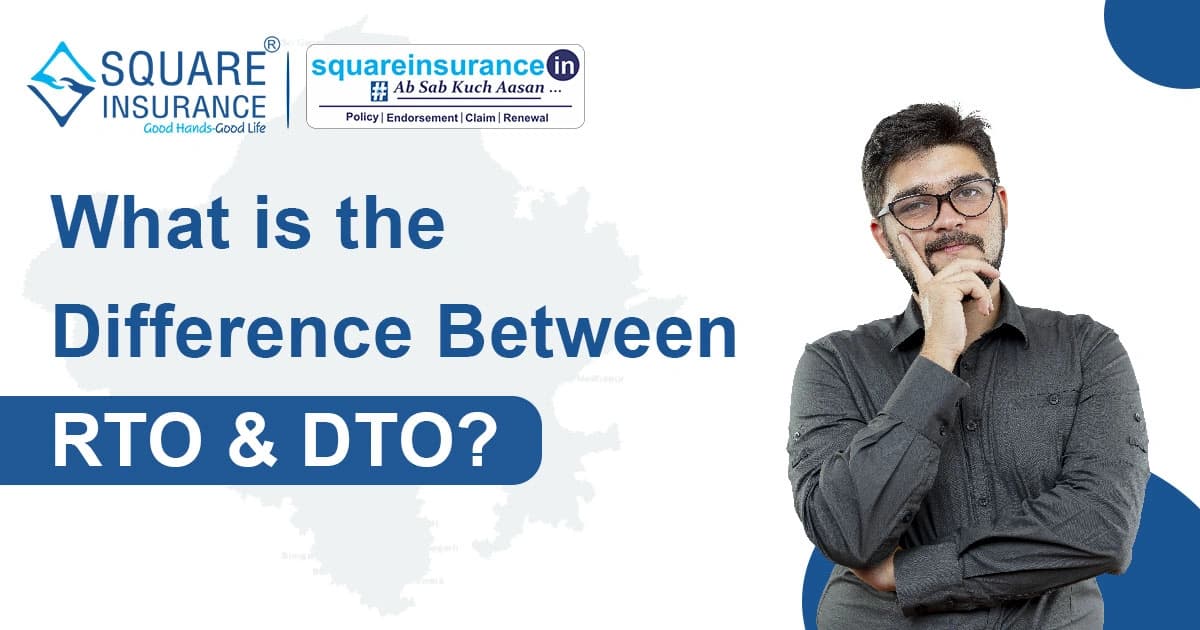
Whether you own a personal or commercial vehicle, it is important to ensure that your vehicle is legally eligible to be driven on the road. After purchasing any vehicle, you must obtain legal permission to use it both within your state and outside of it.
This is where the Regional Transport Office (RTO) and the District Transport Office (DTO) come into the picture. RTO and DTO are government agencies in India which are responsible for administering and regulating road transport within their respective jurisdictions.
But what exactly is the difference between them? If you are looking for the basic difference between RTO and DTO, this guide will help you understand it clearly.
Let’s start to know more about RTO vs DTO.
What is RTO Meaning?
The full form of RTO is “Regional Transport Office”, also called the Regional Transport Authority (RTA). It is a government office that looks after transport and vehicle-related work in each state of India.
The RTO was formed after the Motor Vehicles Act of 1988 created the Motor Vehicle Department. This department is led by the Transport Commissioner and is responsible for making sure transport rules are followed.
RTO officers can check vehicles entering a state to see if they have paid taxes and to stop crimes involving vehicles. The RTO also started using high-security number plates. These plates make roads safer and help prevent criminals from using stolen or scrapped vehicles.
What are the Functions of RTO?
The Regional Transport Office (RTO) works to make sure all rules under the Motor Vehicles Act and other transport laws are followed. It handles many important tasks related to vehicles and drivers.
Here are the main jobs of the RTO:
- Making and following traffic rules and policies.
- Managing transport between different states and districts.
- Keeping records of all drivers and vehicles.
- Collecting road taxes, fees, and other charges.
- Giving vehicle registration certificates and permits for commercial vehicles.
- Issuing Indian and international driving licenses.
- Managing the process when a vehicle’s ownership changes.
- Checking vehicles to make sure they meet safety standards.
- Taking steps to improve road safety.
- Working with DTO offices in its area.
Difference Between RTO and DTO
| Factors | RTO | DTO |
|---|---|---|
| Full Form | Regional Transport Office | District Transport Office |
| Level of Operation | Works at the state or regional level | Works at the district level |
| Jurisdiction | Covers multiple districts under a region or state | Covers only one specific district |
| Main Role | Implements transport rules and policies for the region/state | Implements transport rules and policies within the district |
| Driving Licenses | Issues Indian and international driving licenses | Issues Indian driving licenses |
| Special Functions | Coordinates with multiple DTOs in its jurisdiction, sets safety standards, and enforces inter-state transport laws | Issues NOCs for vehicles moving to other districts/states, ensures district-level road safety |
Future Usefulness of RTO and DTO
In the coming years, the work of RTO and DTO will become even more modern and helpful for people. Here are some simple examples of how they are changing:
- Digital Services: Many services like applying for a driving license, paying road tax, or getting vehicle registration are now available online. Even challans (fines) can be paid through e-challan systems. This saves time and reduces paperwork.
- Eco-Friendly Steps: RTOs and DTOs are encouraging the use of electric vehicles (EVs) and making sure vehicles follow new emission standards. This helps reduce pollution and makes our roads cleaner.
- Use of Technology for Safety: With the help of data analytics and artificial intelligence (AI), traffic can be managed better. These tools can help prevent accidents, improve road safety, and control traffic jams.
- Impact of New Vehicle Technology: As vehicles become smarter with features like self-driving assistance and better safety systems, RTOs and DTOs will update their rules to make sure these vehicles are safe and follow the law.
Conclusion
RTO (Regional Transport Office) and DTO (District Transport Office) are both government offices that deal with vehicle and driver services. The main difference is that RTO works at the state or regional level, while DTO works at the district level. Both do similar jobs like giving driving licenses, vehicle registration, and checking traffic rules. Understanding this difference helps you know where to go for your transport-related needs.
FAQs - Difference Between RTO and DTO
- RTO stands for Regional Transport Office.
- DTO stands for District Transport Office.
Yes, they do similar work like giving driving licenses, vehicle registration, checking vehicles, collecting road taxes, etc. The main difference is the area they cover. RTO works in a region or state, and DTO works in a district.
Yes, many RTO and DTO services are now online. You can pay road tax, apply for a license, or check your vehicle status through their official websites.
You usually need these documents:
- Proof of identity
- Proof of address
- Purchase invoice
- Insurance papers
- Pollution Under Control (PUC) certificate
Check with your local RTO/DTO for exact requirements.
Yes, they help manage and collect traffic challans. Many states now offer e-challan services online.
RTO and DTO offices are becoming more digital. In the future, more services will be online, and they will support eco-friendly vehicles and road safety using new technologies.
